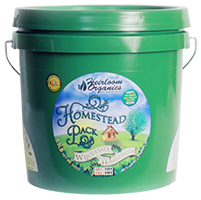|
Home > Guides > Vegetables > Celery |
|
How to Grow Celery | Guide to Growing Celery |
|
|
|
|
| |
|
|
| |
|
| |
Overview Perhaps the most difficult vegetable to grow in many areas, this long-season crop must be started inside. Seeds are slow to germinate, and if transplanted outside too early, plants will bolt in response to cold. Also requires consistent moisture and dislikes heat. |
|
| |
|
|
| |
|
|
| |
|
|
14 to 21 days, 70F to 75F |
|
|
|
|
|
|
|
|
|
|
|
|
|
|
|
|
|
|
|
|
Growing Guide
GROWING NOTES
Prefers full sun.
Prefers rich soil, high in organic matter with pH 6.0 to 7.0 and consistent, plentiful supply of moisture.
Can tolerate soils that are less than well-drained because it was originally a wetland plant.
Seeds need to be started inside and are difficult to germinate. Cold weather after transplanting can cause bolting.
Needs plentiful moisture and long season, but doesn't tolerate heat well.
MAINTAINING
Start plants inside about 10 to 12 weeks before last frost. Plant several seeds per cell. Seeds need light to germinate, so don't cover seed deeply. Keep soil moist and warm (about 70 F to 75 F) until seeds germinate in 2 to 3 weeks. After germination, grow inside in a cool location (about 60 F to 70 F). Thin to one seed per cell.
Plants will withstand light frost, but 10 days with night temperatures below 40 and days below 55 F can cause bolting. So harden plants by reducing water, not lowering temperature.
Set out transplants 6 to 12 inches apart, rows 18 to 36 inches apart, about 2 weeks before average last frost.
Plants are shallow-rooted and require consistent moisture. Lack of water will make stalks fibrous and bitter. Mulch to retain moisture, suppress weeds and avoid disturbing roots when cultivating.
For a milder flavor, blanch by wrapping stalks two weeks before harvest with paper, a cardboard milk carton or other material.
|
|
| |
|
| |
Heirloom seeds are the gardeners choice for seed-saving from year-to-year. Learning to save seeds is easy and fun with these books. Before you harvest, consider which varieties you might want to save seeds from so that your harvesting practice includes plants chosen for seed saving. Be sure to check out our newest seed packs, available now from Heirloom Organics. The Super Food Garden is the most nutrient dense garden you can build and everything you need is right here in one pack. The Genesis Garden s a very popular Bible Garden collection. The Three Sisters Garden was the first example of companion planting in Native American culture. See all of our brand-new seed pack offerings in our store.
|
|
| |
|
|
| |
Harvesting Guide
HARVESTING
Harvest celery when it has reached the desired size, cut the plant off above the soil line so that all stalks are still as one unit. Wash the stalk bulb in cold water and dry. Celery will keep in the fridge for a couple of weeks. Celery will blanch natrurally when in storage.
You can if you desire remove a few stalks at a time rather than harvesting the whole plant. If doing this remove the outer stalks first and let the less developed inner stalks continue in their development. Take care not to damage the rest of the plant if removing individual stalks.
SAVING SEEDS
Celery's primary umbels mature first and often shatter before the secondary umbels are dry. It is best to hand harvest the umbels as they mature. The seeds can be separated easily as the umbels are harvested and will be fairly clean. Any remaining dust and debris can be removed by screening or winnowing.
"If further drying is necessary, the umbels can be dried in the sun below 95 degrees F. and then covered at night to protect from the dew."
|
|
| |
|
|
|
| |
|
|
|
|
|
| You can find this variety in the following Seed Packs: |
|
   |
|
| Click the packs below to see some of our other wonderful products |
|
|
|
|
|
|
|